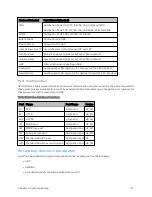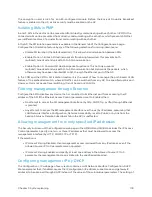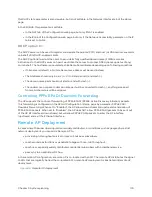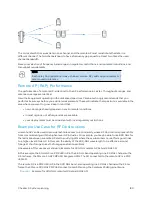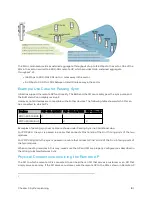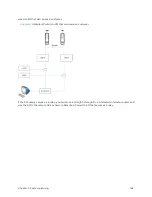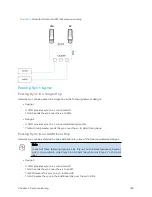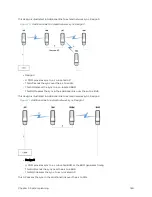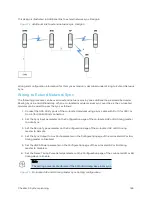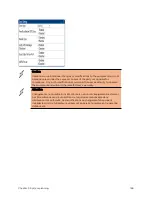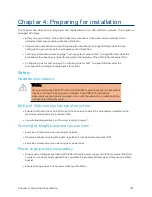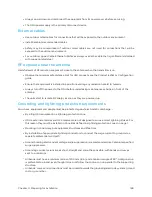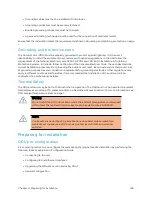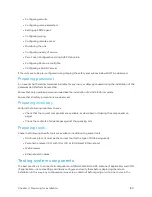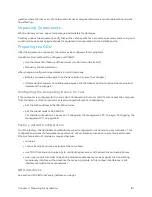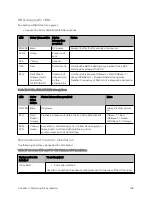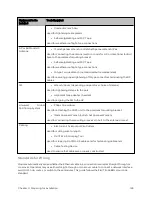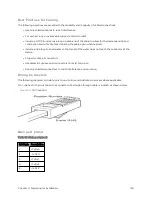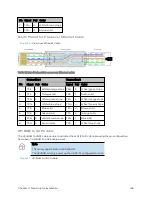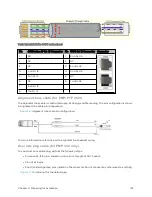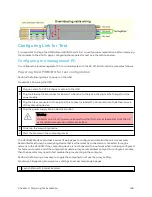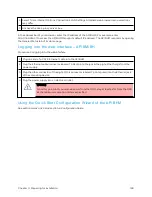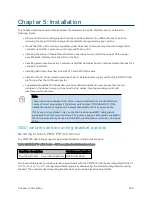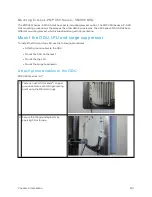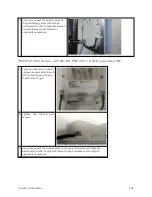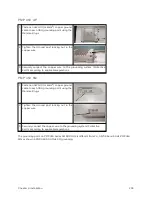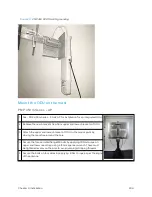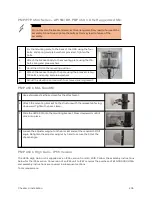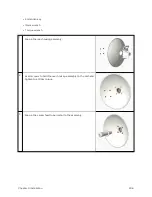
Chapter 4: Preparing for installation
191
weather, where the discovery of configuration issues or marginal hardware is more problematic and work-
flow affecting.
Unp acking Com p onent s
When a delivery arrives, inspect all packages immediately for damages.
Carefully unpack the equipment, verify that all the components have arrived as per order and are in good
condition. Save all packaging materials for equipment transportation to the installation site.
Pr ep ar ing t he ODU
After the equipment is unpacked, the units may be configured for staging tests.
Use either of two methods to configure an AP/BHM:
l
Use the Quick Start feature of the product (via GUI menu Quick Start)
l
Manually set each parameter
After changing configuration parameters on a GUI web page:
l
Before you leave a web page, click the Save button to save the change(s)
l
After making change(s) on multiple web pages, click the Reboot button to reboot the module and
implement the change(s)
Configuring t he Comput ing Device for Test
If the computer is configured for Dynamic Host Configuration Protocol (DHCP), disconnect the computer
from the network. If the computer is instead configured for static IP addressing
l
Set the static address in the 169.254 network
l
Set the subnet mask to 255.255.0.0.
For detailed instructions, see section Configuring the management PC on page "Configuring the
management PC" on page 198.
Fact ory default Configurat ion
From the factory, the APs/BHMs and SMs/BHSs are all configured to not transmit on any frequency. This
configuration ensures that equipment operators do not accidentally turn on an unsynchronized module.
Site synchronization of modules is required because
l
modules:
l
cannot transmit and receive signals at the same time.
l
use TDD (Time Division Duplexing) to distribute signal access of the downlink and uplink frames.
l
when one module transmits while an unintended module nearby receives signal, the transmitting
module may interfere with or desense the receiving module. In this context, interference is self-
interference (within the same network).
O DU int erfaces
See section 450 Platform Family interfaces on page 1
Summary of Contents for PMP 450 Series
Page 92: ...Chapter 2 System hardware 92 Figure 29 MicroPoP Omni antenna implementation pattern Vertical...
Page 134: ...Chapter 3 System planning 134 Figure 51 Mast or tower installation...
Page 135: ...Chapter 3 System planning 135 Figure 52 Wall installation...
Page 136: ...Chapter 3 System planning 136 Figure 53 Roof installation...
Page 137: ...Chapter 3 System planning 137 Figure 54 GPS receiver wall installation...
Page 158: ...Chapter 3 System planning 158 Figure 61 cnMedusa Antenna...

